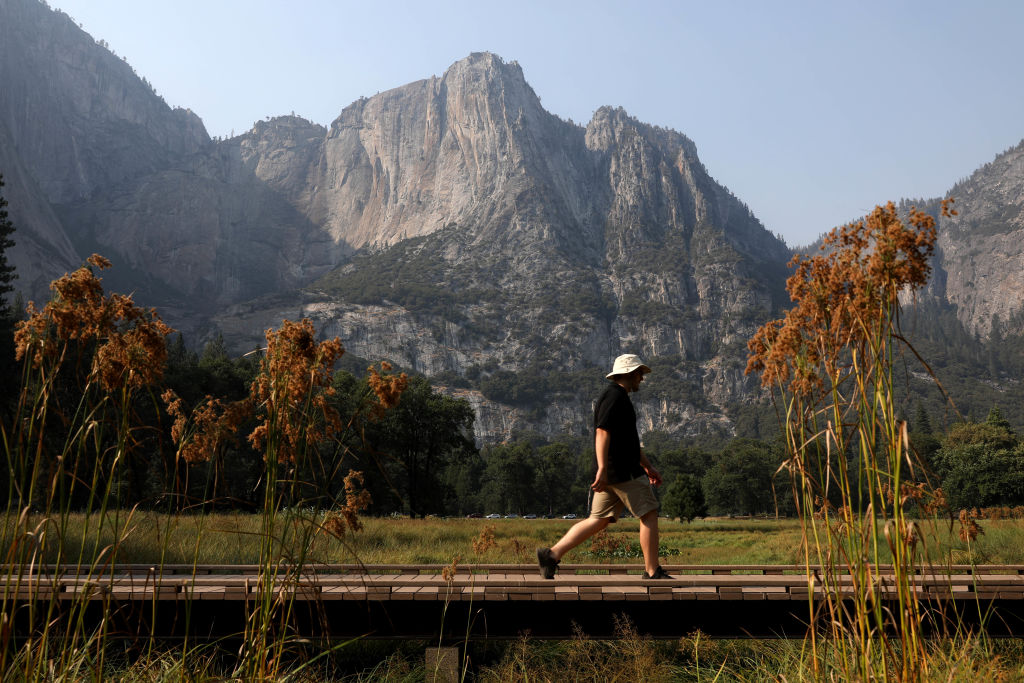It’s no secret that C-suite-level executives are at the highest risk for burnout. The heavy weight of their responsibilities and the personal sacrifices that they require all take a toll, which makes achieving a healthy work/life balance incredibly difficult. It’s no wonder, then, that many top executives attempting to juggle a demanding job as well as family obligations are facing burnout in their positions at an increasing rate.
Many companies have attempted to address this by offering wellness and decompression benefits like gyms in the office space, meditation classes, chair massages, and even nap pods. Studies have shown that productivity increases when employees are happy and these programs have been created to try and head off burnout before it starts.
But what happens when a chair massage between conference calls isn’t enough?
Sometimes a more drastic change of scenery is necessary. Whether it is recovering from a strenuous position they’ve exited, temporarily stepping away from their career to regain a sense of self that has been lost, or reinvigorating their creative juices, many executives need to undertake an executive time-out every now and then. Unfortunately, in our workaholic culture, many don’t realize it in time and their careers—and businesses—can suffer.
There are as many reasons for these breaks as there are people who take them, but these four executives who chose to put their careers on pause all experienced a similar result: their long breaks restored them. While the four men we spoke with took a mini-sabbatical from their demanding day jobs—their absences averaged three to four weeks—others might achieve the same benefit from less time away from the office, while others may need much longer decompression periods to enjoy the same benefits.
The Need for Recovery
Alexander S. Lowry, currently Executive Director of the Master of Science in Financial Analysis Program at Gordon College, was the Chief Operating Officer for the JP Morgan Chase Foundation at one point in his career. In a demanding job that required seemingly endless hours of dedication, Lowry eventually found himself facing a major case of burnout. “I needed a chance to rest and recharge,” he recalls. He isn’t alone.
Even executives that have practically invented the word “recharge,” like Kjeld Schigt, founder of Kalon Surf (a luxury surf resort in Costa Rica), have to keep a close watch on their level of career focus and intensity. “I believe that with owning your own company, comes true dedication, passion, and working virtually 24/7—which, as a workaholic, I actually love.” Despite this, he took his first short sabbatical—three weeks—on doctors’ advice. Even someone in the business of providing world-class relaxation needs to take his own medicine. “For me, these trips are a must.”
Rock Thomas, a former top-selling realtor, was the CEO of his own coaching company, Rock Thomas International, when he realized in 2016 that he was “no longer being creative and needed time to reflect.” Although he had achieved practically limitless success first as a realtor, and then as a life, success, and personal growth coach and speaker, it was a pivotal moment in his career, he says.
Bryan Miles, CEO and co-founder of BELAY, a virtual assistance company that has been featured on the Inc 5000 list three times and ranked number one on Entrepreneur’s company culture list, has worked hard to get where he is. He knew that he would have to pace himself to avoid burnout, so he planned his executive break long before he might desperately need it.
They Need to Prepare
To prepare for his four-week, mini-sabbatical, Lowry put together a comprehensive “handover document” detailing all the key people that would cover for him. Schigt and Thomas both emphasized delegation, empowering their employees to take charge in their absences and trusting their ability to run the company. The latter told his interim replacements that “it was okay to make mistakes—just make decisions.”
For his part, Miles cleared his calendar in advance but also encouraged his subordinate leaders to make action while he was away. Still, his assistant prepped all of his associates and he buttoned up some issues prior to his trip, or scheduled follow-ups for after his return
The Need to Pay For It
For Schigt, who is 51% owner of his company, he consulted his partners about the expense. “Our company values R&R as much as hard and quality work—in fact, we believe they are correlated—so it was the company that paid for the leave,” Schigt explained. Lowry, though, drew upon all of his saved-up sick time, vacation time, and rollover time with JP Morgan to take his extended vacation.
Thomas and Miles essentially paid for their sabbaticals out of their own pockets, through careful planning and budgeting. “It’s important to always pay yourself first. And so I do. And because of that I was able to set aside money for an adventure account,” Thomas said. Miles noted that “we [he and his wife, who is his business partner] just took the time off…and paid for it personally. As owners of the company, we don’t leverage paid time off like our employees.”
Miles added—and it echoes the sentiments of all these executives—that the real expense was the time away, leaving their careers or businesses to run without them. But each of them felt it was a necessary risk.
They Need to Get Away
So, where do you go to recharge when you’re already living at a luxury resort in Costa Rica? Schigt has chosen some far-away locals over the years: Barcelona and Amsterdam with his family, Hong Kong by himself.
How does he choose? Schight treats every escape “like a prescription drug: every time you will need something different.” He typically books a trip like this twice a year to compensate for his demanding position, one that is practically all-consuming the rest of the time.
Lowry took the occasion of his honeymoon as an excuse to jet off to Australia and New Zealand. Because of the distance he would be traveling, he chose a longer stay—four weeks—and noted that people accepted the length of his time away.
Thomas traveled the world, trekking to India for a meditation retreat, and to Costa Rica for a “plant medicine-based experience.” He has also consulted with spiritual leaders like Tony Robbins, Jack Canfield, Wayne Dyer, and Stephen Covey.
Miles didn’t feel the need to go as far away. Instead, he rented an RV and took an “epic road trip” with his business-partner wife across the United States. “As a family, we got to see the country together and connect in an intentional way.” Sharing the journey, they found peace in the outdoors, while hiking and exploring national parks.
They Returned Better Versions of Themselves
Lowry noted that he was “a whole new person” upon returning. “My wife commented [that] she’d never seen me more relaxed.” For Schigt, he knew that burnout wasn’t an option. “These trips help me to stock up on all the ingredients that our business needs from me. It makes me excited and happy about our company again.”
Thomas said he felt connected, grounded, less anxious and more confident. “I learned that the fast way is actually the slow way.” He now has a daily meditation routine and has come to recognize that his self-worth was not connected to his successes but rather his connection to himself and his creator.
His sabbatical, Miles explained, gave him “the space to think, plan, project, dream, and celebrate our company.” Upon his return, he felt like he could hit the ground running with plans for a brighter future for his firm.
Their Biggest Takeaways
Lowry said that his long trip “reminded me that I can get too caught up in my work and I need to maintain a balance.” Schigt doesn’t seek balance when he’s working, which is often non-stop, he said, but these biannual trips make up for it. “Stepping away from it all really makes you value it much more and in return [you] work even harder and smarter.”
Thomas realized through the quiet of his meditation retreats that he “had become a human doing rather than a human being and that endlessly checking off goals was no longer fulfilling.” Slowing down his thinking and tapping into the intelligence in the universe became the new secrets to his success, he said.
Miles’ biggest takeaway involved the employees he left in charge while he was gone. “By having the mindset of empowering others, our business ran smoothly with trusted, competent leaders who managed the day-to-day. We had zero ‘fires’ while we were away.” He has maintained this newfound trust in his leadership team and said this has been a very positive evolution for his company.
These four men have found that the greatest level of success often comes not from working harder on your business, pouring every ounce of your energy into it, but from completely stepping away and gaining perspective and rekindling your passion and desire. The most successful executives deploy these mini sabbaticals like a pre-emptive strike, taking them before burnout becomes a problem. Empowering their teams, renewing their creativity, bonding with their families: this is the executive’s best medicine.
When are you going to recharge?
This article appeared in an InsideHook newsletter. Sign up for free to get more on travel, wellness, style, drinking, and culture.

























